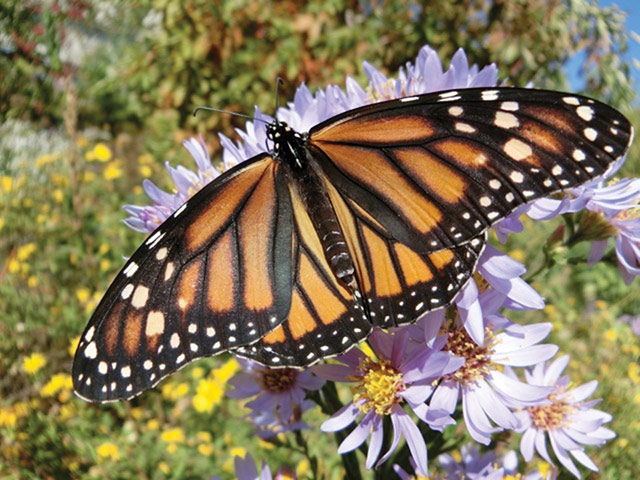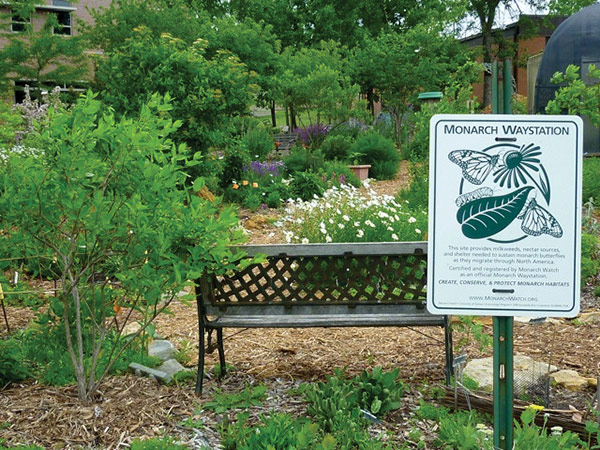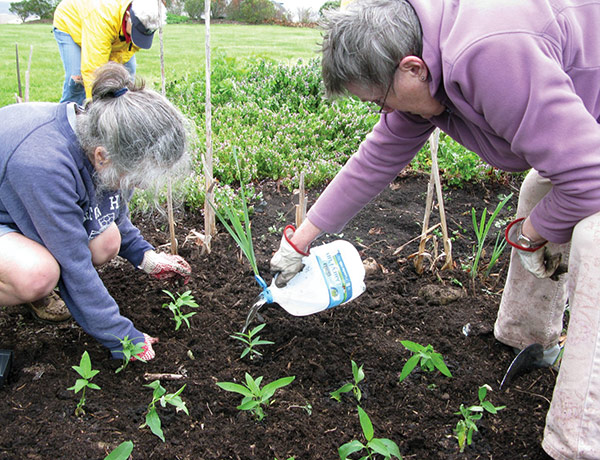What You Can Do to Befriend Monarch Butterflies and Other Pollinators
 |
|
Monarch in the asters. Photo: Chip Taylor, Monarch Watch, University of Kansas. |
By Marcia Anderson, PhD, LTE
U.S. EPA-Center for Integrated Pest Management
Monarch butterflies (Danaus plexippus) are an incredible species that face a growing number of challenges.
Each year, monarchs utilize their sensory system and environmental cues to understand when to migrate. After breeding in the United States and southern Canada in the summer, they begin their southbound journey to Mexico in the fall. In the spring, they migrate back north.
This migration, as phenomenal as it may be, is becoming more difficult for the butterflies. Over the past few decades, the monarch butterfly population has been gradually declining due to the devastation of their breeding grounds and the impact of severe weather.
Luckily, there are small things we can all do to help this beautiful species survive.
Monarch Butterfly Populations Are Declining—Why?
Habitat Loss
It is essential that monarch butterflies have access to milkweed plants—their only host plant. This is especially important in the spring and summer when monarchs lay their eggs on milkweed and their caterpillars feed on the leaves as their sole food source.
Over the past few decades, milkweed has been frequently lost to mowing, weed management, and farming. The widespread application of herbicides on certain crops may have impacted field-edge milkweed on farms throughout the monarch migratory flyway.
Deforestation and illegal logging may also have contributed to loss of monarchs’ overwintering sites in Mexico.
Changing Weather Patterns
Severe weather is another reason the monarch population is declining. Extreme temperatures and droughts can have a significant impact on both milkweed and monarchs.
When monarchs overwinter in Mexico, warmer-than-normal temperatures can cause them to utilize their fat reserves more rapidly than they would otherwise. Monarchs with depleted fat reserves are less likely to survive the winter and successfully migrate north in the spring.
How Can You Help? Make a Monarch Waystation!
 |
|
Monarch waystation. Photo: Chip Taylor, Monarch Watch, University of Kansas. |
An excellent way to help monarchs survive their migration is by establishing monarch waystations. Waystations provide a rest stop for butterflies as they make their long journeys north and south.
Thousands of homeowners, schools, communities, parks, and farms have already created waystations that provide resources essential to monarch survival.
Keys to an Effective Waystation
Successful waystation habitats include:
- A sunny location
- Little or no wind
- At least two species of milkweed native to your area
A plethora of native flowering nectar plants (e.g., sunflower, aster, coneflower, lupine, blazing star, iron weed, and mint)
With water, mulch, and some occasional weeding, you will be rewarded with a beautiful pollinator habitat and grateful fluttering friends.
When making your waystation, planting milkweed is the most essential component. Planting the wrong kind of milkweed—one that is not native to your area—may not help the monarchs. Once you’ve planted milkweed, add in low-maintenance mixtures of native flowering plants that flower through the entire growing season.
Additional Web Resources
To learn more about creating pollinator habitats, see EPA’s web page on monarch protection at www.epa.gov/pollinator-protection/protecting-monarch-butterflies-pesticides.
It includes a section on creating habitats at home and provides links to resources from the Monarch Joint Venture, the United States Department of Agriculture, the U.S. Fish and Wildlife Service, and the National Wildlife Federation.
Convert American Roadsides to Habitats
 |
|
Planting milkweed. Photo: Chip Taylor, Monarch Watch, University of Kansas. |
American roadsides are often overlooked and underutilized as a place to create monarch waystations.
There are at least 17 million acres of roadsides in the United States that could be converted into habitats for pollinators, migratory birds, and small mammals. Several states have recognized this opportunity and changed their rights-of-way management practices to reintroduce native flowering plants that support pollinators.
This practice is called integrated roadside vegetation management (IRVM). It includes seeding native plants, employing selective mowing and prescribed burns, and making judicious use of herbicides.
Better Vegetation Management, Better Outcomes
IRVM programs save states and communities money, as it is cheaper to mow less frequently and to apply fewer herbicides. In addition, the added vegetation reduces runoff, improves air quality, and provides added resistance to invasive plants.
Consider as an example the Florida Department of Transportation. By reducing rights-of-ways mowing by 10 percent, they’ve provided space for pollinator-habitat growth along roadways from spring to fall. After the flowers have gone to seed, the habitats are mowed to prevent woody plants from taking hold.
Recognizing Opportunities to Protect Monarchs
The next time you are driving along the highway or through your local neighborhood, consider how you and your community can create a flourishing habitat to help protect monarch butterflies.
We hope this information has empowered you to support the development of waystations or to build your own. Thanks to efforts both large and small, our fluttering friends will be thankful.
Further Reading
For more information, visit EPA’s pollinator protection webpage at www.epa.gov/pollinator-protection or view the EPA webinar on creating monarch habitats for schools and communities at neipmc.org/go/h6rw.
The Northeastern IPM Center promotes integrated pest management for reducing risks to human health and the environment. If republishing our news, please acknowledge the source (“From Northeast IPM Insights”) along with a link to our website.
